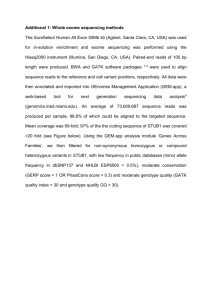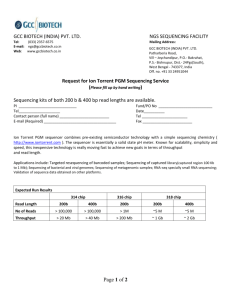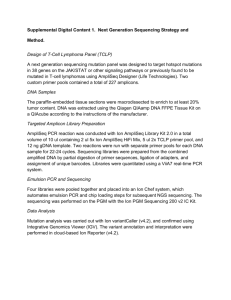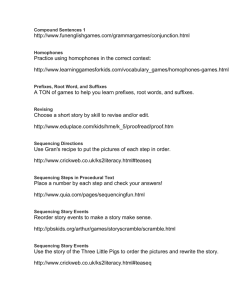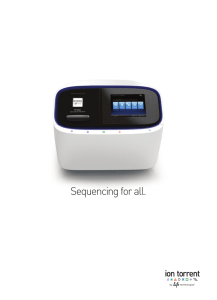Genomics Core.
advertisement
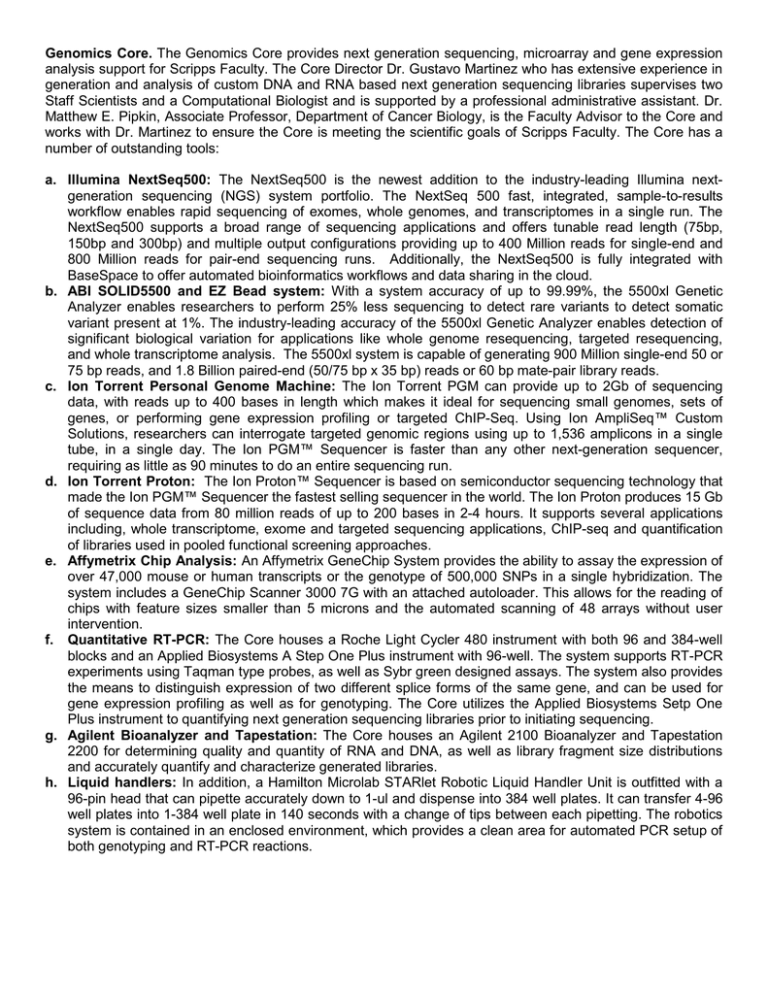
Genomics Core. The Genomics Core provides next generation sequencing, microarray and gene expression analysis support for Scripps Faculty. The Core Director Dr. Gustavo Martinez who has extensive experience in generation and analysis of custom DNA and RNA based next generation sequencing libraries supervises two Staff Scientists and a Computational Biologist and is supported by a professional administrative assistant. Dr. Matthew E. Pipkin, Associate Professor, Department of Cancer Biology, is the Faculty Advisor to the Core and works with Dr. Martinez to ensure the Core is meeting the scientific goals of Scripps Faculty. The Core has a number of outstanding tools: a. Illumina NextSeq500: The NextSeq500 is the newest addition to the industry-leading Illumina nextgeneration sequencing (NGS) system portfolio. The NextSeq 500 fast, integrated, sample-to-results workflow enables rapid sequencing of exomes, whole genomes, and transcriptomes in a single run. The NextSeq500 supports a broad range of sequencing applications and offers tunable read length (75bp, 150bp and 300bp) and multiple output configurations providing up to 400 Million reads for single-end and 800 Million reads for pair-end sequencing runs. Additionally, the NextSeq500 is fully integrated with BaseSpace to offer automated bioinformatics workflows and data sharing in the cloud. b. ABI SOLID5500 and EZ Bead system: With a system accuracy of up to 99.99%, the 5500xl Genetic Analyzer enables researchers to perform 25% less sequencing to detect rare variants to detect somatic variant present at 1%. The industry-leading accuracy of the 5500xl Genetic Analyzer enables detection of significant biological variation for applications like whole genome resequencing, targeted resequencing, and whole transcriptome analysis. The 5500xl system is capable of generating 900 Million single-end 50 or 75 bp reads, and 1.8 Billion paired-end (50/75 bp x 35 bp) reads or 60 bp mate-pair library reads. c. Ion Torrent Personal Genome Machine: The Ion Torrent PGM can provide up to 2Gb of sequencing data, with reads up to 400 bases in length which makes it ideal for sequencing small genomes, sets of genes, or performing gene expression profiling or targeted ChIP-Seq. Using Ion AmpliSeq™ Custom Solutions, researchers can interrogate targeted genomic regions using up to 1,536 amplicons in a single tube, in a single day. The Ion PGM™ Sequencer is faster than any other next-generation sequencer, requiring as little as 90 minutes to do an entire sequencing run. d. Ion Torrent Proton: The Ion Proton™ Sequencer is based on semiconductor sequencing technology that made the Ion PGM™ Sequencer the fastest selling sequencer in the world. The Ion Proton produces 15 Gb of sequence data from 80 million reads of up to 200 bases in 2-4 hours. It supports several applications including, whole transcriptome, exome and targeted sequencing applications, ChIP-seq and quantification of libraries used in pooled functional screening approaches. e. Affymetrix Chip Analysis: An Affymetrix GeneChip System provides the ability to assay the expression of over 47,000 mouse or human transcripts or the genotype of 500,000 SNPs in a single hybridization. The system includes a GeneChip Scanner 3000 7G with an attached autoloader. This allows for the reading of chips with feature sizes smaller than 5 microns and the automated scanning of 48 arrays without user intervention. f. Quantitative RT-PCR: The Core houses a Roche Light Cycler 480 instrument with both 96 and 384-well blocks and an Applied Biosystems A Step One Plus instrument with 96-well. The system supports RT-PCR experiments using Taqman type probes, as well as Sybr green designed assays. The system also provides the means to distinguish expression of two different splice forms of the same gene, and can be used for gene expression profiling as well as for genotyping. The Core utilizes the Applied Biosystems Setp One Plus instrument to quantifying next generation sequencing libraries prior to initiating sequencing. g. Agilent Bioanalyzer and Tapestation: The Core houses an Agilent 2100 Bioanalyzer and Tapestation 2200 for determining quality and quantity of RNA and DNA, as well as library fragment size distributions and accurately quantify and characterize generated libraries. h. Liquid handlers: In addition, a Hamilton Microlab STARlet Robotic Liquid Handler Unit is outfitted with a 96-pin head that can pipette accurately down to 1-ul and dispense into 384 well plates. It can transfer 4-96 well plates into 1-384 well plate in 140 seconds with a change of tips between each pipetting. The robotics system is contained in an enclosed environment, which provides a clean area for automated PCR setup of both genotyping and RT-PCR reactions.

